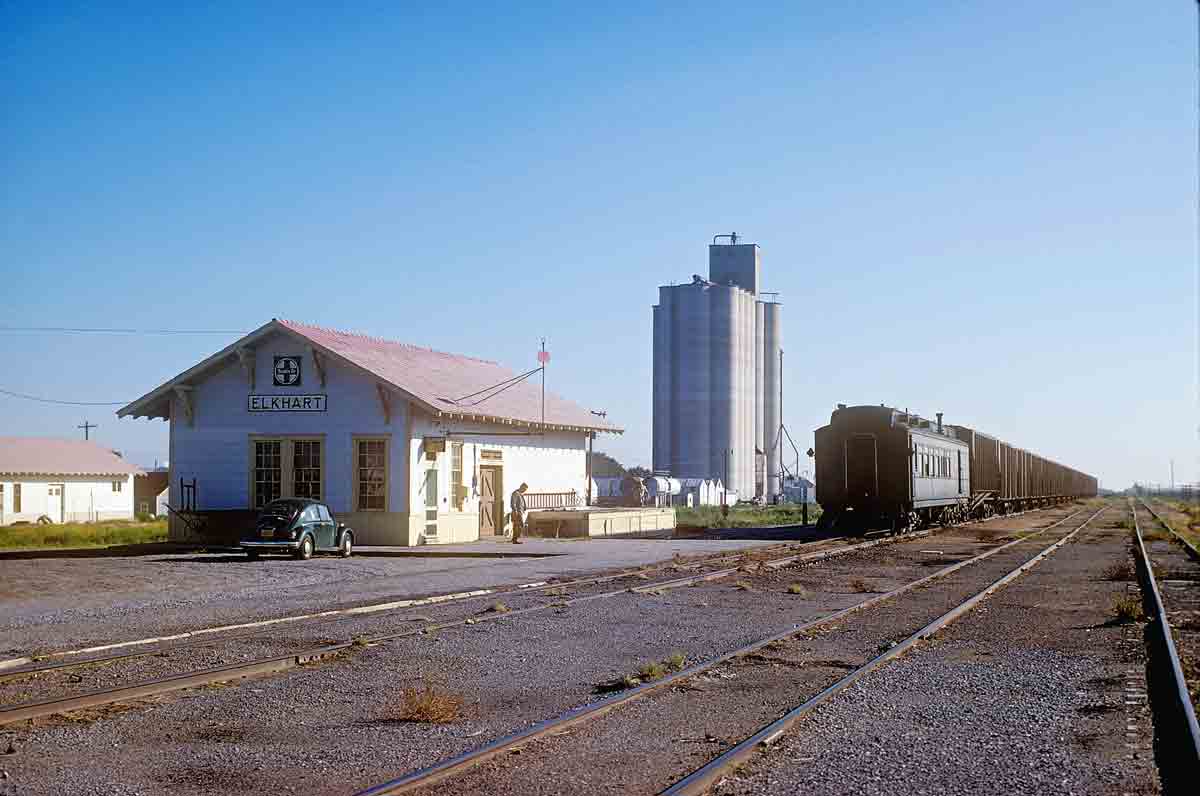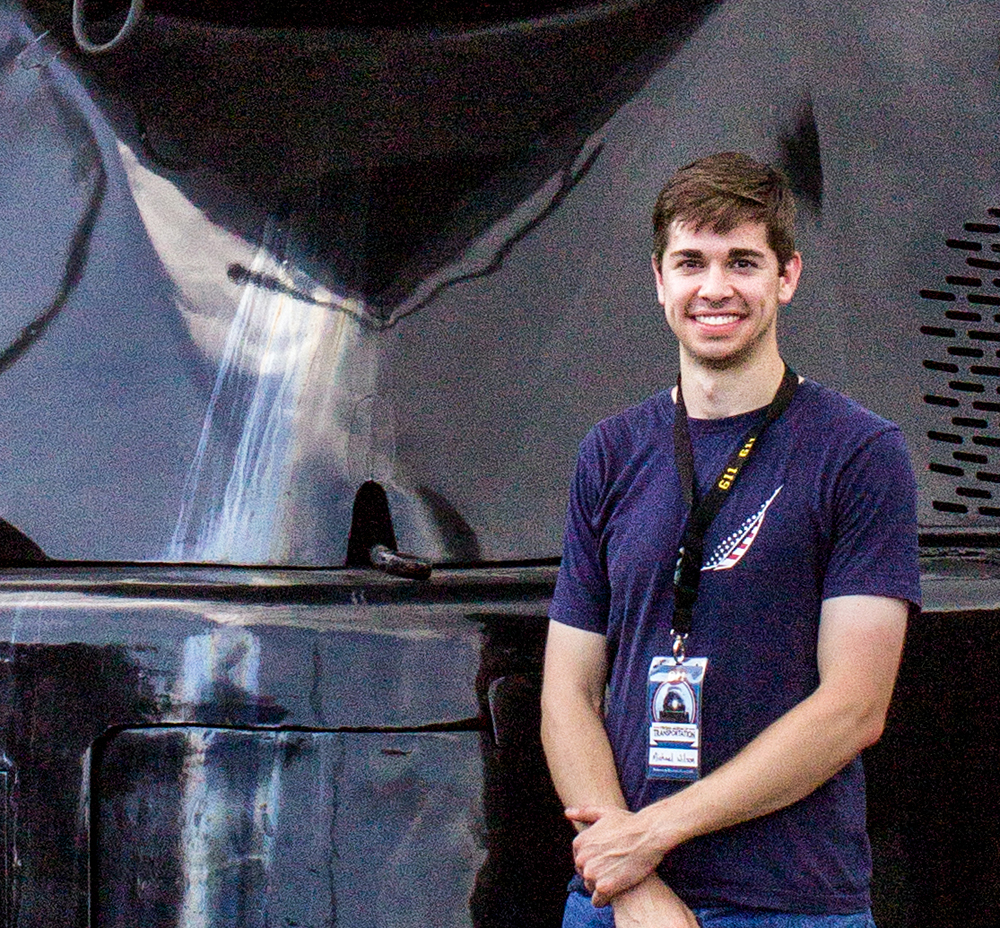It was spring 1970 and passenger-train service in the U.S. still included the glossy flanks of Union Pacific’s “City of Everywhere” and roses on the dining-car tables aboard Santa Fe’s Super Chief. But passengers didn’t have it so good on many other lines as railroads were doing what they could to stem financial losses and discourage patronage. At the bottom of the list, light years away from a bedroom on the Crescent or a seat in a Hiawatha Super Dome, were the lowly mixed trains.
“Mixed,” of course, meant the train carried both freight and passengers. The concept dated to the earliest days of railroading, but found its calling on branch lines where business couldn’t support separate freight and passenger runs. There were also situations where railroads agreed to provide service, often for 99 years or some other stretch into the unimaginable future, in exchange for land grants or other local government support. The mixed train was the best, and least, effort a railroad could make to honor the contract. Santa Fe 173/174 offered mixed service three days a week: west Monday, Wednesday, and Friday; east Tuesday, Thursday, and Saturday.
So, here I was in Dodge City, Friday morning, May 29, more or less fresh from a night’s rest at the Lora Locke Hotel. Given the bullet holes in my room’s window, maybe I should have taken the yard man’s offer to sleep in the mixed’s waycar. I had set my alarm for 6 a.m. to catch the scheduled 7 a.m. departure, but in the tradition of mixed trains, we were now expecting to leave at 9:30. This left time to see the westbound Super Chief-El Capitan make its brief visit, and get myself around a big breakfast at Jack’s on Wyatt Earp Avenue, while the crew made up our train.
I say “our” as I was joined by a railfan intent on making the same trip to Boise City. He kept to himself and seemed to spend most of his time taking notes. The rest of “us” was a crew of four: Pluto was our engineer, Larry was the conductor, Lou was head brakeman, and Tom was the other brakeman. They welcomed their two train nuts aboard the waycar, and before long we were under way.
The equipment on 173 was first-class. Waycar 999179 was newly refurbished with cushioned underframe and all the comforts of home. Power up front was F7A 326, F7B 238A, and GP7 2797. The 326 was resplendent in red and silver Warbonnet colors, and I was told it was one of 30 or so units geared for 85 mph so they could handle either freight or passenger runs. In between there were only 10 freight cars, but it was explained to me that depending on interchange business at Satanta, Kans., and Boise City, the consist could easily grow to over 100 cars.
Once out of Dodge City our train settled in at 30 mph or so on straight, level track laid across a straight, level landscape, impressive in its emptiness. The crew pointed out wildflowers, the dry Cimarron River bed (it goes underground in this area, we were told), and a graveyard where rested the remains of early pioneers lost in a prairie fire. We could see grain elevators from 20 miles away.
The ride in the waycar was comfortable on the reasonably well-maintained track. But at lunch in a café in Satanta, the brakeman said our engineer wouldn’t mind us riding in the cab, so that became the center of my attention for the rest of the day. Soon we resumed our run toward the Oklahoma panhandle. Along the line we picked up grain hoppers, ballast cars, and a few helium tank cars at an on-line plant, and the crew worked hard in the hot sun. I felt a little guilty just sitting in the open cab doorway behind the engineer, catching the breeze and enjoying the beauty of springtime in the West. After one switching exercise, Tom returned to the cab with a fistful of wildflowers and placed them in a cup of water, fixing things up nice for his guests.
Just before our 6:15 p.m. arrival in Boise City, our conductor ordered a stop, then got off and dug up a cactus he’d had his eye on. The crew did some switching in the yard and put the train to bed for the night. My fellow traveler left us here, and I got a room at the Crystal Hotel. Lou and I had dinner together, followed by a visit to see a rock garden (that was about it for local attractions). Then it was off to the “club” (an arrangement for getting around the Sooner State’s prohibition, only recently repealed). The Coors flowed freely, as did stories of steam days, wrecks, grade-crossing accidents, and interesting old-timers. We all headed for some shut-eye around midnight . . . I think. Not that I had too much to drink, but although we were in the Central time zone, this division on the Santa Fe was on Mountain time. The crew carried watches with two hour hands.
The next morning, the job list called for switching five of those helium cars into our train, which involved moving 30 others around the yard. On our way at 7:30 (vs. a 6 a.m. schedule time), I continued to occupy my spot in the diesel cab doorway. At Elkhart, Pluto turned the controls over to me for the next leg into Hugoton. Wow! We only had four cars at this point and the cab signals didn’t have anything to do, but with blowing the air horn at crossings and peering out over that red-and-yellow nose, I could have had the Super Chief in my hands.
Satanta was our lunch stop again, after which we picked up a Geep from the Pritchett run, along with five empty ammonia tank cars. Not wanting to leave our conductor feeling unappreciated, I decided to head back to the waycar for the final 30 miles or so into Dodge City. I staked a claim to the “back porch,” as Larry called it, and the open observation platform of the California Limited couldn’t have been better as we trundled along over the Kansas plains.
Back in Dodge at 3 p.m. And that’s Central time. As confirmation, I checked the two large stone sundials at the station,one for each time zone. The rest of my time in Dodge City would include a dinner of prairie stew, iced tea, and homemade blueberry pie — all for 82 cents. The remainder of the trip would find me on the Super-El Cap, flying across western Illinois ensconced in Pleasure Dome lounge car 501. But for a friendly crew and another chance to experience a rare part of railroad history, nothing could top getting out of Dodge on “the mixed.”
First published in Winter 2012 Classic Trains.
Learn more about railroad history by signing up for the Classic Trains e-mail newsletter. It’s a free monthly e-mail devoted to the golden years of railroading.















@James Dierks… Just read your “Will stop on signal only” article. Was surprised to see mention of Glenbrook H.S. I attended Glenbrook North (1984). Would hang out at A-20 in Techny starting in 1977.
How I WISH things could still be like this.
Had to be so cool doing what you did.
Wow, what a great article and experience. I did ride in a mixed baggage car and passengers on ACL with parents on our return trip from Punta Gorda, FL to Lake Alfred, FL where we moved into a regular passenger car for the long ride home over 3 railroads. But to sit with the crew and share stories and ride in caboose and cab was something never to be repeated Would not happen today with all the rules. Even me and my Dad walking around the Frisco yards where he worked would not happen. The “bulls” would see us and wave as they all knew Dad and we were not trespassers, he always made sure we were not crossing over a track with a train moving. Sometimes we would just on the steps of his yard office and watch all the action. He even got my cousin and me into a caboose that was parked by my aunt’s house who lived right by the yard. We looked around and got back off. Mom found out and said what if the train had moved, and Dad said they always stop at his office to pick up train crew and we would have just got off. Nothing would have been said but a long walk back. And he got us into the yard tower too another time for a good view of all the action. I am sure today workers are not allowed to bring their children around their “workplace”. I did get to ride BNSF employee special train last summer as a FB friend who works at the yard was able to get me a ticket. I finally got on the property once again after many years. Dad’s office was torn down years ago but we rolled thru the yards and I saw many places I had seen from “ground level”. I am glad BNSF has kept the yard up and running. Dad died before the BN takeover, he had not retired yet, only 61 and had to work until 65. Mom had worked for them too as had her grandfather, father and his brothers. She hated to see the Frisco name removed from the office but that is how it worked. Thanks for sharing your great memories.
Enjoyed this immensely. My comments just echo the other’s here. Wish I could share this on Facebook but that link doesn’t seem to be working.
A marvelous telling of the times when mixed freight still was a mode choice. How refreshing to remember the generous & hard working railroaders who would/could easily share what they had. I suspect much of the terrain of those KS/OK high plains remains essentially the same as was once viewed by some of those unfortunate prairie pioneers. Today, who isn’t inspired to visit that former ATSF line? I wager that more than a few of us would enjoy standing by the old Elkhart station or find that elusive blueberry pie in a prairie cafe. Let the cold Coors flow at tie up. Cheers!
Wonderful. The trip made great memories. Thanks for sharing.
Never had that experience in the US, but I did in Ireland, Spain, Germany and Brazil. The crews were always friendly and obliging no matter where you were. But those trains are almost all now gone. The past is indeed yet another country which we can never revisit, other than by of accounts like that of Mr Dierks.